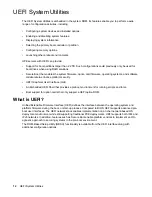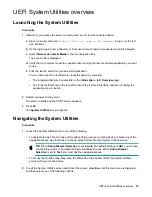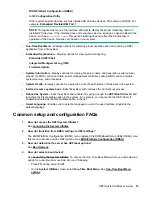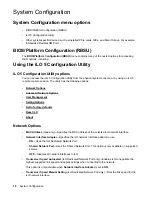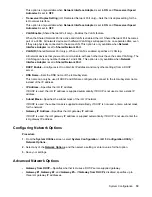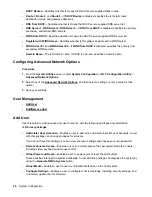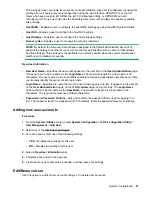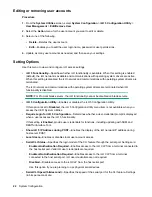
Enrolling a KEK certificate.....................................................................................85
Delete KEK Entry...................................................................................................85
Deleting a KEK entry............................................................................................. 85
Allowed Signatures Database (DB) Options......................................................... 85
Enroll Signature (Allowed DB)...............................................................................86
Enrolling a signature in the Allowed Signatures Database....................................86
Delete Signature (Allowed DB)..............................................................................86
Deleting a signature from the Allowed Signatures Database................................ 86
Forbidden Signatures Database (DBX) Options................................................... 86
Enroll Signature (Forbidden DB)........................................................................... 87
Enrolling a signature in the Forbidden Signatures Database................................ 87
Delete Signature (Forbidden DB).......................................................................... 87
Deleting a signature from the Forbidden Signatures Database............................ 87
Delete all keys (PK, KEK, DB, DBX)..................................................................... 87
Deleting all keys ................................................................................................... 88
Reset all keys to platform defaults........................................................................ 88
Resetting all Secure Boot certificate keys to platform defaults............................. 88
Configuring PCIe devices.............................................................90
Configuring Server Availability.................................................... 91
Server Availability options................................................................................................ 91
ASR Status.......................................................................................................................91
Enabling or disabling ASR............................................................................................... 91
ASR Timeout.................................................................................................................... 91
Setting the ASR timeout...................................................................................................91
Wake-On LAN.................................................................................................................. 92
Enabling or disabling Wake-On LAN................................................................................92
POST F1 Prompt..............................................................................................................92
Setting the POST F1 prompt delay.................................................................................. 93
Power Button Mode..........................................................................................................93
Enabling or disabling momentary power button functionality........................................... 93
Automatic Power-On........................................................................................................ 94
Setting the automatic power-on state...............................................................................94
Power-On Delay...............................................................................................................94
Setting the power-on delay.............................................................................................. 95
Configuring BIOS serial console and EMS options................... 96
BIOS Serial Console and EMS options............................................................................96
BIOS Serial Console Emulation Mode............................................................................. 96
Setting the BIOS Serial Console Emulation Mode........................................................... 96
EMS Console................................................................................................................... 96
Configuring the EMS console...........................................................................................97
Configuring Server Asset Information........................................ 98
8












